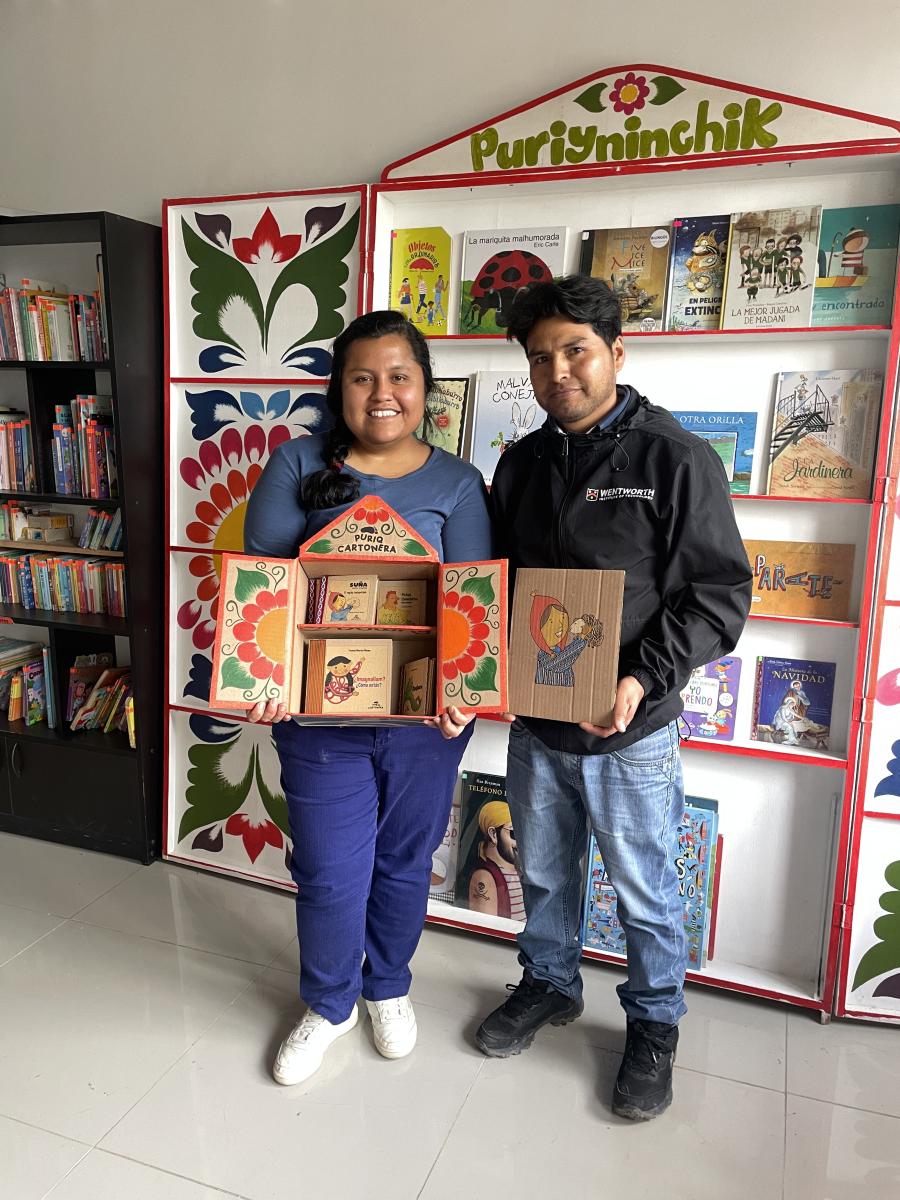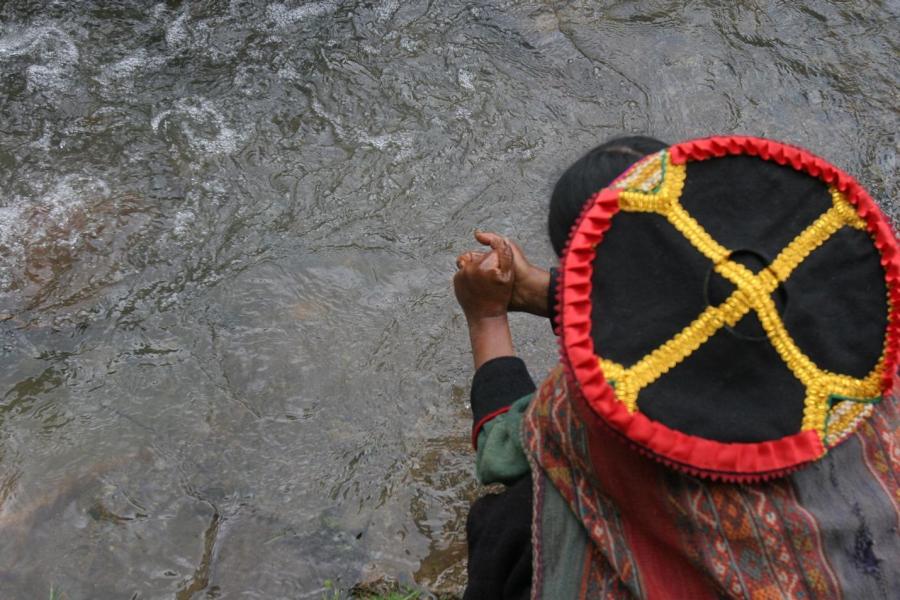Native cultivators in the Amazon have developed efficient and ecologically sound methods for making the tropical forest yield useful products. Their principal form of agriculture - shifting cultivation - has evolved into a system of land management with features worthy of careful study.
Shifting cultivation essentially involves the cutting and burning of the forest to prepare a temporary agricultural field. Once yields decline after several seasons of harvests, the field is abandoned to secondary regrowth of the forest.
The technique is linked, in ways which we are examining, to another system of land use currently recommended for the tropics, generally called agroforestry. This system combines the production of crops and tree species, simultaneously or sequentially, on the same unit of land.
Our purpose is to describe traditional plant management and its economic potential in an Amazon community. We are focussing upon the secondary forest- the fallow period of shifting cultivation - as an example of native agroforestry.
Our research is being conducted in Brillo Nuevo, a community of Bora Indians on the Ampiyacu River, a tributary of the Amazon 120 kilometers east of Iquitos, Peru.
The Bora ancestral homeland is actually across the Putumayo River in what is now southern Colombia. Before the turn of the century, the tribe was semi-nomadic, residing in large communal houses in the upland forest. They practiced shifting cultivation in communal fields, augmented by subsistence hunting and fishing.
The Amazon rubber boom which began around 1900 meant disaster for the native communities of the Putumayo. Peruvian rubber corporations enslaved the Bora (and the Witoto, Ocaina, and Andoque tribes), forcing them to harvest the valuable latex from wild stands in the forest. Large numbers of Putumayo natives were wiped out during this epoch. The sufferings of these people are recorded in the appropriately titled book The Putumayo, The Devil's Paradise, written by the American explorer W.E. Hardenburg in 1912.
Some years later, following Peru's loss of a border war with Colombia and the ceding of territory north of the Putumayo, many Bora were evacuated to their present homesites on the Ampiyacu.
Today, fewer than 1200 Bora live in Peru, with probably less than half that number still in Colombia. There are less than a dozen communities in the Ampiyacu basin comprising Bora, Witoto and Ocaina natives. These are now permanent settlements with individual family homes.
Bora agriculture is based upon shifting family fields in the forests surrounding the settlements. June to August is the period when fields are cut and burned in preparation for planting. The fields vary in size from .2 to .5 hectares, and are preferably made on the tops of small hills.
The Bora choose from some fifty species of crops. Manioc and pineapple are planted in virtually all fields. Fruit trees, including peach palm (Bactris sp.), uvilla (Pourouma cecropiaefolia), umari (Poraqueiba sp.), caimito (Chrysophyllum caimito), and guava (Inqa edulis) are commonly planted. Tubers, transplanted wild plants, and timber species are optional crops. The combination of plants, their maturation schedules and spatial arrangements determine the management alternatives open to the farmer.
We began the study by observing planting and harvesting practices to discover how these affect subsequent management decisions. Some fields are only planted with corn, manioc and scattered fruit species. Such fields are relatively simple and are harvested for a maximum of four years. Others, enriched with fruit species, are of special interest. Often planted in high, well drained sites, the fruit trees normally determine how long a field is to be maintained.
Fields pass through several stages culminating in the fallow stage. To trace the path of field succession, samples of fallow plots of differing ages are being studied. Date of burning is used as time zero in each case. A three year old manioc and fruit field was first surveyed to familiarize us with the crop composition and management of a mature enriched garden. Fallows undergoing more thorough examination are of five, six, eight, and nineteen years.
Histories of each fallow - crops planted, weeding and harvesting schedules, useful species currently present - were compiled. We also measured and mapped the fallows, delimiting zones of vegetation which reflect management practices or natural patterns of forest regeneration.
Plants were collected in the fallows, along with information from Bora assistants on their possible uses. We are finding that plants generally fit into five use categories: food, medicine, construction material and firewood, handicraft material, and utilitarian plants (vines for tying firewood, etc.).
Sampling of the vegetation followed. This entailed enumerating species and frequencies of occurrence along tapes-extended ten meters into field plots studied. In this fashion, we hope to estimate the densities of useful plants in each field.
A similar measuring and sampling process is underway on older fallows, ranging from 10 to 35 years.
We are in the process of making some preliminary observations on traditional Bora agroforestry. One prominent conclusion is that shifting cultivation evolves into an agroforestry system during the latter period of the cropping cycle, and during the early years of forest fallow. In essence, the stages progress from manioc garden, to mixed manioc-fruit garden, to residual fruit orchard, to high forest.
Consequently, the notion that shifting cultivation fields are "abandoned" needs reassessment. While a field may not yield manioc for more than two to three years because of the decline of soil fertility, orchard trees will continue to grow and give fruit for a longer period of time. Regular weeding assures that fruit trees are not competing with secondary growth species for light and soil nutrients.
Some degree of weedy fallow growth, however, must be permitted. Besides being a reservoir of potentially useful species, a forest fallow is a store of nutrients which will be returned to the earth as ash fertilizer when the field is cut, burned and planted anew.
A field may be visited on a regular basis for secondary harvests for up to eight years if properly weeded and maintained. Fields where small stands of the coca shrub are grown - consumed as dry leaf material by the Bora as a mild stimulant - may be cleaned and kept free from shade for up to ten years.
We also discovered that the Bora protect slow-growing useful species - for example, tropical cedar and mahogany - in young fallows. Moreover, work is underway to introduce seedlings of timber species, further enriching the fallows. These will be valuable resources for the Bora in future years.
The next stage in our research is to determine the marketing potential of material extracted from the managed fallows. As the Bora become more integrated into the dominant Peruvian culture - an inexorable process in Amazonian Peru - they are searching for ways to bolster their local economy. Formerly dependent on the forest, they now want to buy clothing and other items they feel are necessary in this new age.
Ultimately, we hope traditional agroforestry techniques will be incorporated into new models of tropical agriculture. At issue is land management in Amazonia for the production of food. Tropical forests are disappearing to make way for low productivity pastures and monocropped fields - land use patterns that make little sense ecologically. Agroforestry and fallow management promise to be practical concepts for preserving the forest cover, while at the same time producing food and other forest products.
* In the spring of 1981, the U.S. Man in the Biosphere Program (MAB) awarded a grant to the University of Wisconsin-Madison to undertake research on tropical forestry in conjunction with the Universidad Nacional de la Amazonia Peruana (UNAP) of Iquitos, Peru. The principal investigators at Wisconsin, Dr. William M. Denevan of the Department of Geography and Dr. Christine Padoch of the Institute for Environmental Studies, are collaborating with Ing. Salvador Flores Paitan, research director at the UNAP, on a project in the Peruvian Amazon in a Bora community. Initial field work has been carried out by Dr. Julie Denslow, botanist at UW-Madison, geography graduate student John Treacy, also at Wisconsin, and Janis A. Alcorn, ethnobotanist at the University of Texas-Austin.
Article copyright Cultural Survival, Inc.




